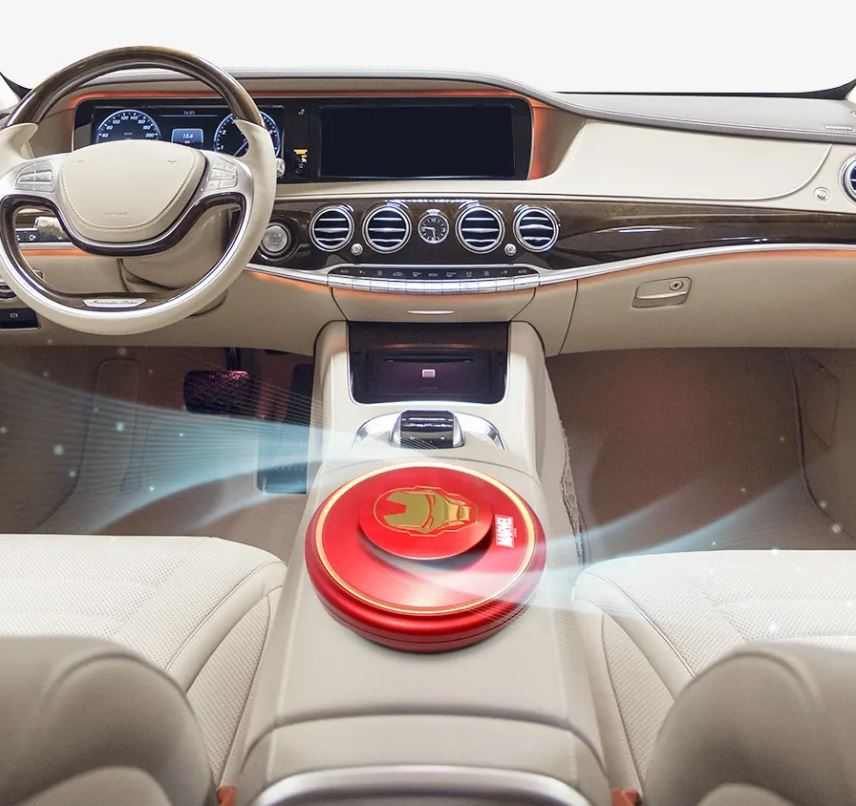We will always remember the first time we got behind the wheel of our first, brand new car – there’s nothing like it. You get a high from that new car smell and everything it represents – the perfect, gleaming glovebox, no scratches, no marks or dust….It feels so exhilarating and exciting that even after that new car smell is gone, you still long for it.
Well, little did we know, this new car smell that we so love can actually be quite harmful to our health. The smell comes from the glue, adhesives, paint, carpeting, leather and vinyl sealants, and other plastic parts that make up the interior components of your car. These volatile organic compounds (VOCs) can be harmful when inhaled or ingested, and can lead to severe health impacts.

What chemicals are in the new car smell?
The CSIRO study listed the following VOCs as being emitted inside new cars, and the effects they may cause include:
- Benzene – a known human carcinogen for which an annual exposure goal of 16 micrograms per cubic meter has been recommended in the UK
- Acetone – a mucosal irritant
- Cyclohexanone – a possible human carcinogen
- Ethylbenzene – a systemic toxic agent
- MIBK – a systemic toxic agent
- n-Hexane – a neurotoxic agent
- Styrene – a probable human carcinogen
- Toluene – a central nervous system dysfunction agent
- Xylene isomers – a foetal development toxic agent
They are especially potent indoors – the Environmental Protection Agency (EPA) recognise VOCs as being 10 times more powerful when in a confined space.

How long do these chemicals remain?
What’s worrying is that research by CSIRO suggest that the toxics in new cars remain for up to six months and longer.
A new car that was tested had high levels of air toxic emissions (up to 64,000 micrograms per cubic metre). Although these levels decreased by 60% in the first month, much still exceeded the NHMRC indoor air goal of 500 micrograms per cubic meter. A car that was tested four months after manufacture still had a concentration of 2000 micrograms per cubic meter – four times the recommended goal.
Such high exposure to VOCs in such a confined space explains why some of us experience disorientation, headache, and respiratory problems in new cars. Worse still, a Japanese study found that it will take three years for the level in cars to fall below the safe limit!
The VOCs in your car can also increase in concentration during hot weather. Toshiaki Yoshida, the chief researcher at the Osaka Institute of Public Health, analysed the indoor air quality inside a new minivan every week for the first two months, and then every month after that. The van was driven 3,500 miles (approximately 5633 kilometers) a year.
Mr Yoshida found that on the day of delivery, the van contained 113 kinds of VOCs, mostly hydrocarbons. It took 4 months for the VOC levels to fall below the safe limit set by the state. However, the levels shot above the safe limits again in the hot summer months, even after two years.
Jeff Gearhart, research director at the Ecology Center, said high temperatures in cars (which are full of plastic) can increase the concentration of VOCs and break other chemicals down into more toxic substances. With that, he said that cars “function as chemical reactors, creating one of the most hazardous environments we spend time in.”
How to remove the toxic VOCs and ‘new car smell’ from cars
Whether your car is new or a few years old, it’s important to remove the VOCs trapped indoors to create a healthier, safer breathing environment for ourselves and our passengers. So how do we keep ourselves and our passengers safe from these VOCs in our car?

Thorough ventilation
Mr Yoshida recommends thorough ventilation to remove the VOCs inside the car. Roll down your windows while driving to let more fresh air in, especially during the first 6 months of buying a new car.
“Bake out” the car
Speed up the release of chemicals in the car by “baking it out” – a process that combines heat and ventilation, followed by cleaning. Raising the temperatures inside the car force the chemicals to be released into the air. Then, ventilating it removes these chemicals from inside the car before they can be reabsorbed.

To do this, leave your car in the hot sun, with windows open an inch or two, for a few hours. Then, open the windows wide and air the car thoroughly. After airing, clean all internal surfaces with a microfiber cloth and a mild solution of water with vinegar or washing soda. Wipe down the surfaces on a sunny day so that they dry quickly and to prevent any mould issues.
Try using absorbents
Activated charcoal and baking soda are known to be non-toxic, absorbent materials that can absorb chemical odours. Leave some in your car in disposable plastic boxes under the car seat to help absorb any extra chemicals that your car interior may emit.
Use an air purifier for your car
It’s important to note that cars will never completely stop releasing VOCs and other gases. Using air purifiers that combine HEPA filters and activated charcoal filters in the car can help to reduce exposure to these ongoing interior chemical emissions. In-car air purifiers are the most effective at efficiently removing VOCs from the car.

Clean regularly
Clean car interiors regularly to remove chemicals that continue to be released and settle on interior surfaces. Also, park you car out in the sun when possible, and open windows before driving off to ventilate the chemicals which have accumulated in parked cars.
Leave your car at home
If you don’t have to, don’t drive. There are more chemicals and VOCs in your car than there are outdoors or in other areas, so reducing your time in the car is one way to reduce your exposure to harmful VOCs. Leaving the car at home also minimises its carbon footprint on the earth and helps your wallet by saving on petrol costs, too. Walk, take the bus, or cycle instead.
Choose wisely
Thankfully, car manufacturers have started taking steps to remove toxic new car smell from their cars by switching to water-based glues and choosing more natural materials. For example, Toyota has moved to water-based glues, and Ford is testing seat foam made of soy instead of petroleum-based materials. So if you’re after a new car, check the manufacturer’s site or ask the dealer if the car maker has taken any steps to reduce VOCs from car interiors.







